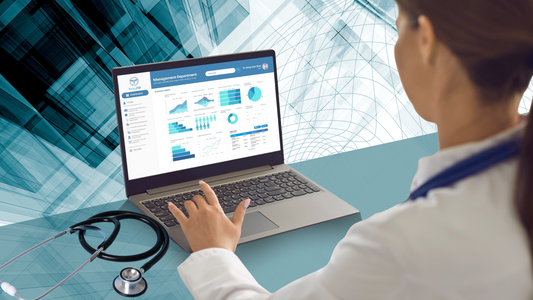Simple answers to the questions hospital leaders are afraid to ask.
In the halls of Southeast Asia’s hospitals, leaders are being asked to do more with less—optimize resources, improve patient outcomes, and streamline operations—all while managing rising demand, limited staff, and fragmented systems.
Yet despite this pressure, many decisions are still being made with outdated reports, disconnected spreadsheets, or worse—by gut instinct.
It’s not a lack of care or capability.
It’s a lack of clarity.
At MedicalPro, we believe data analytics shouldn’t be intimidating or out of reach. It should be accessible, practical, and built for the realities of Southeast Asia.
🧠 So, What Is Hospital Data Analytics?
At its core, data analytics helps hospital leaders make smarter decisions by turning raw operational, clinical, and administrative data into insights they can act on.
There are four key types you need to know:
-
Descriptive analytics shows you what happened.
“Last week, ER volume spiked by 17%.” -
Diagnostic analytics explains why it happened.
“It aligned with a surge in dengue cases and staffing gaps on night shifts.” -
Predictive analytics shows what’s likely to happen next.
“This coming week, we expect another surge based on local trends.” -
Prescriptive analytics suggests what to do about it.
“Add two triage nurses between 6–11pm to reduce wait times.”
These aren’t abstract concepts—they're leadership tools. They allow hospitals to anticipate, align, and act, rather than just react.
📍 Why This Matters Now—Especially in Southeast Asia
Hospitals in our region face very specific challenges:
- A mix of public and private systems with different KPIs
- Limited staff covering high caseloads
- Decision-making spread across WhatsApp threads, siloed EMRs, and disconnected tools
- MOH reporting requirements layered with compliance demands (PDPA, HIPAA)
Traditional analytics platforms assume large IT teams, perfect data, and unlimited budgets. But most Southeast Asian hospitals are balancing complex workflows with very real resource constraints.
That’s why hospital intelligence must be regional, relevant, and rapid—not global, generic, and delayed.
🏥 It’s Not About Software. It’s About Leadership.
Hospital analytics isn’t a fancy dashboard. It’s a decision-making engine.
It tells you:
- When and where to adjust staff
- How to improve discharge planning
- What trends are affecting performance KPIs
- And how to align your team around the same set of truths
Leaders who understand analytics don’t just manage—they guide.
They shift from firefighting to foresight.
And no—you don’t need to be a data scientist to lead this change.
You just need the right tools—built for your hospital, not borrowed from somewhere else.
That’s what we’ve committed to building at MedicalPro.
🚀 What’s Next?
In our next article, we’ll show how analytics can be applied across departments—from ER flow to finance—without overhauling your existing systems.
Because smart hospitals aren’t just tech-enabled.
They’re data-informed, people-led, and built for the real world.
👉 [Continue: 5 Ways Hospital Analytics Can Transform Your Operations]







